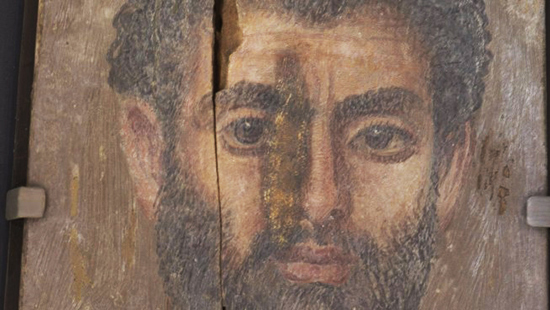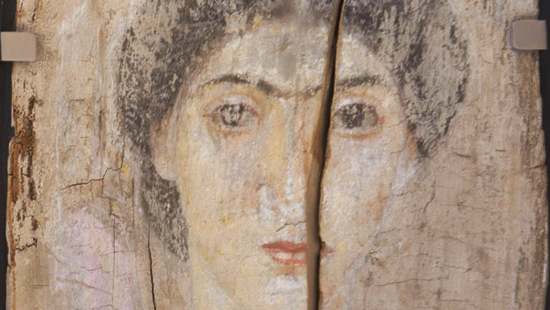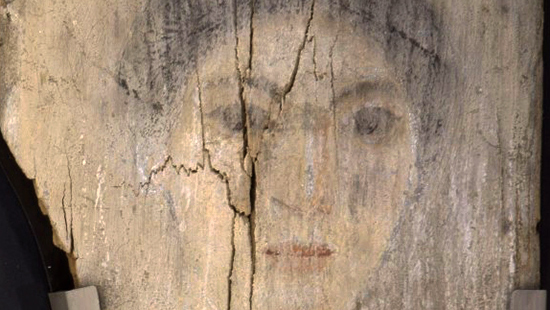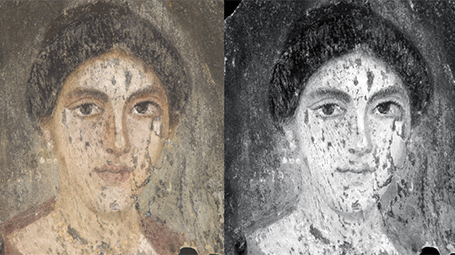
The Results of Investigation
The images in the link below show three side by side comparisons: RGB image (~450-750 nm) on the left,
Roman Egyptian Mummy Portraits
Our research team, headed by Marc Walton, investigated details of the materials and methods used by Roman-Egyptian artists to paint lifelike mummy portraits more than 2,000 years ago. The researchers identified the pigments used by the artists and the order the paints were applied and to which regions, as well as sources of materials and the style of brushstrokes used. The researchers uncovered
The researchers studied 11 mummy portraits and
The researchers made use of advanced imaging and analytical tools in Northwestern University's NUANCE Center (Atomic and Nanoscale Characterization Experimental Center), including X-ray fluorescence and X-ray diffraction to uncover the surprising use of Egyptian blue in the mummy portraits. To learn about the cause of death, the diet and the method of mummy wrapping, the researchers ran a CT scan of the mummy. This was followed by a Advanced Photon Source synchrotron radiation analysis at the Department of Energy’s Argonne National Laboratory to reveal more mysteries.

The images in the link below show three side by side comparisons: RGB image (~450-750 nm) on the left,


The surface topography of these painted surfaces is composed of the

For this project, we developed a new PS algorithm that takes into account near lighting conditions and specular reflectances. We used our near-light model for the most accurate photometric stereo calculations of surface normals. More information about this work and how we captured these data can be found on the comp photo lab website.

Salvant, J., J. Williams, M. Ganio, F. Casadio, C. Daher, K. Sutherland, L. Monico, F. Vanmeert, S. De Meyer, K. Janssens, C. Cartwright, and M. Walton. 2017. "Roman Egyptian Painting Workshop: Technical Examination of the Portraits from Tebtunis, Egypt." Archaeometry. Published online 2017-11-24.
Walton, M., and A. Shortland. 2016. "Red-Shroud Mummies: Links and Sources." In Science in the Study of Ancient Egypt, edited by S. Zakrzewski, A. Shortland, and J. Rowland, 289-298. New York: Routledge.
Ganio, Monica, Johanna Salvant, Jane Williams, Lynn Lee, Oliver Cossairt, and Marc Walton. “Investigating the use of Egyptian blue in Roman Egyptian portraits and panels from Tebtunis, Egypt.” Applied Physics A 121, no. 3 (2015): 813-821.
Marc Walton presented “Romano-Egyptian Mummy Portraits from Tebtunis, Egypt,” at the February 2015 AAAS symposium “Faked or Changed? Using Science to Reconstruct Object Biography.”